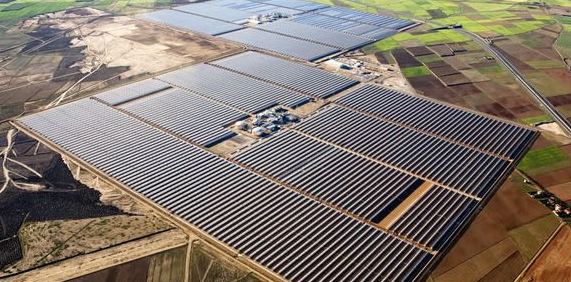In a world increasingly threatened by climate change, resource depletion, and environmental degradation, sustainable development has become a critical priority. Engineering plays a pivotal role in driving sustainable solutions that balance economic growth, environmental stewardship, and social well-being. From renewable energy systems to eco-friendly infrastructure, let’s explore the groundbreaking engineering projects that are paving the way toward a more sustainable future.
1. Solar Power Plants: Harnessing the Sun’s Energy
Turning Sunshine into Clean Power
One of the most significant contributions to sustainable development comes from large-scale solar projects. Solar farms, like the Noor Complex in Morocco and the Bhadla Solar Park in India, produce vast amounts of clean energy without emitting greenhouse gases.
Key Features:
- Photovoltaic panels that convert sunlight into electricity
- Solar thermal systems that store energy for use after sunset
- Reduced dependency on fossil fuels
Impact:
Solar projects help lower carbon footprints, create green jobs, and make renewable energy more accessible across regions.
2. Offshore Wind Farms: Power from the Seas
Tapping into Wind Energy Over Oceans
Offshore wind farms, such as the Hornsea Project in the United Kingdom, represent a new frontier in sustainable energy. Positioned in windy ocean locations, they can generate vast amounts of electricity without occupying valuable land space.
Engineering Challenges:
- Designing turbines to withstand harsh marine environments
- Transporting and installing massive turbine components at sea
- Managing maintenance operations in remote areas
Environmental Benefit:
Wind farms produce no air or water pollution and provide a reliable energy source, crucial for transitioning to a green economy.
3. Sustainable Urban Infrastructure: Eco-Cities
Building Cities with the Planet in Mind
Urban areas are responsible for the majority of global carbon emissions, making sustainable city design crucial. Eco-cities like Masdar City in the UAE aim to operate with minimal environmental impact.
Key Elements:
- Smart grids for efficient energy use
- Public transportation networks to reduce car dependency
- Green building certifications like LEED for construction
Long-Term Vision:
Sustainable urban development minimizes ecological footprints while enhancing residents’ quality of life.
4. Water Purification and Recycling Systems
Ensuring Clean Water for All
Projects like Singapore’s NEWater initiative show how engineering innovations can create new sources of potable water through advanced purification and recycling technologies.
Technologies Used:
- Microfiltration and reverse osmosis
- Ultraviolet disinfection
- Smart water management systems
Sustainability Impact:
Water recycling reduces stress on freshwater sources, supports growing populations, and increases resilience to droughts.
5. Green Transportation Networks
Revolutionizing Mobility for a Cleaner Tomorrow
Sustainable transportation systems are at the heart of reducing urban pollution. High-speed rail systems, electric buses, and cycling networks are transforming how we move.
Notable Projects:
- California High-Speed Rail (USA)
- Hyperloop development projects (Global)
- Copenhagen’s extensive bike-friendly infrastructure
Why It Matters:
Cleaner transportation reduces greenhouse gas emissions, improves air quality, and promotes healthier lifestyles.
6. Carbon Capture and Storage (CCS) Projects
Fighting Climate Change with Technology
CCS technology captures carbon dioxide emissions from industrial processes and power plants and stores them underground to prevent them from entering the atmosphere.
Leading Examples:
- Boundary Dam Carbon Capture Project (Canada)
- Petra Nova Carbon Capture Project (USA)
Environmental Impact:
Although still in development stages, CCS could play a crucial role in achieving net-zero emissions goals.
7. Sustainable Agriculture and Vertical Farming
Feeding the Future Sustainably
Traditional farming strains land and water resources. Innovative solutions like vertical farms use hydroponics and controlled environments to grow food with minimal resource use.
Key Features:
- Year-round crop production
- 70-90% less water usage compared to traditional farming
- Reduced need for chemical pesticides
Successful Models:
Companies like AeroFarms and Plenty are leading the way in scaling sustainable urban agriculture.
8. Waste-to-Energy Plants
Transforming Trash into Power
Waste-to-energy (WTE) projects address two challenges at once: managing waste and generating energy. Facilities incinerate non-recyclable waste to produce electricity and heat.
Examples:
- Amager Bakke (Copenhill) Plant in Denmark — doubles as a ski slope!
- Shenzhen East Waste-to-Energy Plant (China)
Sustainability Advantage:
WTE plants reduce landfill usage and lower methane emissions, contributing to cleaner cities.
9. Green Building Projects
Designing Eco-Friendly Spaces
Modern engineering focuses heavily on green building practices, incorporating energy efficiency, sustainable materials, and smart technologies.
Famous Green Buildings:
- The Edge (Amsterdam) — One of the greenest office buildings in the world
- Bosco Verticale (Milan) — Vertical forest buildings that integrate plant life into architecture
Green Certifications:
Buildings often aim for standards such as LEED, BREEAM, or WELL certification to validate their sustainability efforts.
10. Reforestation and Ecosystem Restoration Projects
Engineering Natural Solutions
While not traditional “engineering” in the mechanical sense, projects that restore forests and ecosystems involve significant technical planning and environmental engineering expertise.
Major Projects:
- The Great Green Wall (Africa) — Aiming to combat desertification across the Sahel
- Rewilding Europe initiatives
Environmental Benefits:
Reforestation sequesters carbon, restores biodiversity, and revitalizes local economies.
Conclusion: Engineering a Sustainable Future
The challenges facing our planet are vast, but so are the possibilities. Through innovative engineering projects, we are creating a foundation for sustainable development that benefits people and the planet alike. Whether it’s through renewable energy, smarter cities, cleaner transportation, or greener agriculture, engineering is central to building a resilient, equitable, and thriving future.
As technology advances, engineers will continue to be at the forefront of sustainability efforts, crafting solutions that not only meet today’s needs but also preserve the world for future generations.
Would you like me to also compile a list of Top Sustainable Engineering Trends for 2025 to complement this article? 🌱🚀
Also Read :
